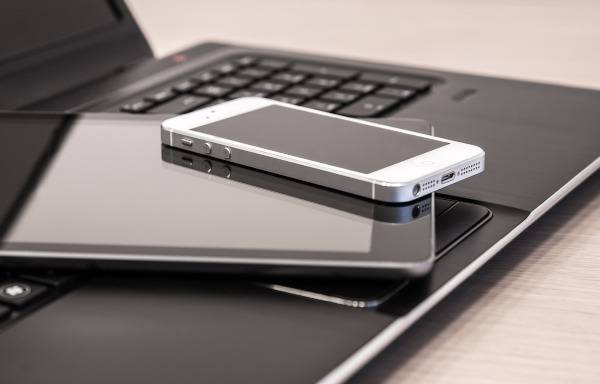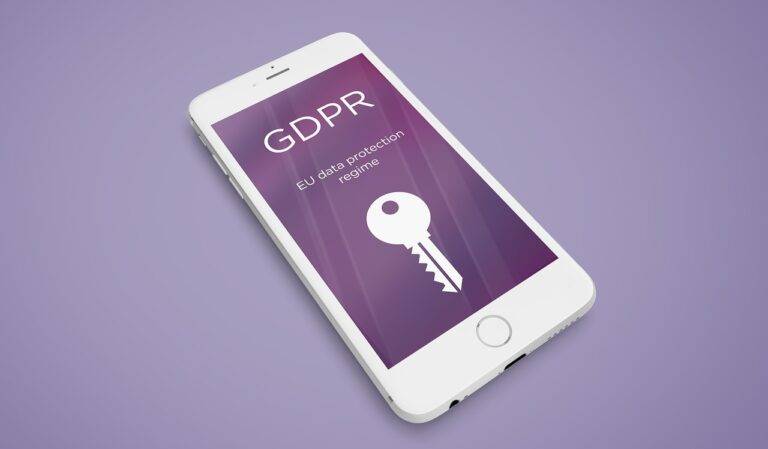Bring Your Own Device to Work (BYOD)
Bring your own device policy (BYOD) refers to the practice where employees use their personal devices (mobiles, laptops, tablets, PC's, etc) to access company information networks and/or systems. Your organisation should consider creating guidelines or a policy. SI ICT can help you to create a BYOD policy.
Your employees may prefer to use their own personal devices, like mobile phones and this places the organisation at risk from reputational damage and legal proceedings.
Organisations need to have a formal policy with regard to the use of personal devices at work.
Bring Your Own Device (BYOD) refers to this type of policy – that defines which mobile devices (if any), employees can use to access company networks/systems.
Consider how to structure such a policy, and what should be included.
A BYOD policy should cover
Organisations need a policy that sets out the devices which may or may not be connected to its network. It will also need procedures to ensure that non-approved devices can never be ‘accidentally’ connected. Finally, appropriate mechanisms must be put in place to maintain security over personal data, which may be stored on personal devices.
Audit of existing devices and access rights
The first step is to perform an audit of the current situation. Which devices use the network, and what for?
What does the law say?
As the organisation/employer (who is the Data Controller) there are obligations under GDPR to take appropriate technical and organisational measures against unauthorised or unlawful processing of personal data and against accidental loss or destruction of, or damage to, personal data.
There is a high risk that confidential organisational and client data can find its way onto personal devices – which are usually not very secure and can be easily lost, or mislaid, or stolen.
The risks of reputational damage
In a scenario where an employee receives an email with an attachment containing a mailing list of all clients and their contact details, which they open and save onto their mobile device. If that device then goes missing the data stored on it could find its way into the public domain, or be mis-used, or sold onto a competitor. What’s worse is that the Information Commissioner’s Office will need to be notified of the loss of data, as will each individual on that mailing list. This can cause major reputational damage as well as a large financial penalty.
Define acceptable devices
Having performed an audit, the second stage is to decide what to include or exclude from a BYOD policy.
Zero-tolerance
This may be the quickest, easiest and simplest solution, but may not necessarily be the most pragmatic or practical.
It may also serve to hinder rather than help some employees perform certain tasks, which can lead to job dissatisfaction and a lowering of morale.
So, an outright ban could prove to be counter-productive.
It can also be quite difficult (and therefore expensive) to control and police a zero-tolerance policy without strong network security controls.
Approved devices list control management
This allows a set list of devices, or devices with particular operating software (e.g. iOS devices only or Android and Windows devices only).
The approved device approach can make it easier to manage and control access, but may leave some employees disadvantaged if their device is not covered. It can also be difficult to manage, as new models and new devices emerge on a daily basis.
Any device
This allows any device to be “plugged in”.This approach is entirely opposite to zero-tolerance and allows any device to be “plugged in” at any time. Advantages are:
a) Your team are not restricted in their work activities by device
b) Your organisation does not have to keep updating a list of approved devices.
However, strong controls such as mobile device management systems need to be employed with this type of approach.
Alternative to BYOD
Some organisations have a zero-tolerance policy on BYOD and provide devices to employees.
Defining acceptable applications
Your organisation may wish to restrict access to certain applications – most often to email and internet access only. Full-blown access to networks and applications should be avoided where possible, other than from PCs or laptops and then only via trusted networks or secure remote access tools.
Business versus private use
BYOD devices owned by an employee are likely to be used for both business and private purposes.
With an organisation provided device the employee has to be confident that the company will not access personal material stored on the device or use device monitoring tools, whilst on the other hand the company will want to protect corporate and client confidential information which may also be stored (or visible) on the device.
As an organisation you also need to be aware that devices may be used (for personal purposes) not just by the employee, but also by other family members.
Wireless network security
The easiest and quickest way for devices to be attached to a network is for employees to use their device to login to a network, wirelessly. Some firms publish their wireless key to employees without realising that they are using the key on all devices including personal devices.
A common method of providing device security is to make the wireless key very strong (i.e. difficult to remember), and only entered into the device by a member of the IT support team, or other nominated individual. Thus control can be maintained at device level relatively easily. However this approach can be very time consuming, depending on the size or complexity of the organisation.
More robust approaches will utilise network hardware to create access control lists against specific devices that must first be registered and therefore approved by the business before they can connect. The advantages of this method allow for auditing and time zone controls such are restricting wireless access to office hours.
Device registration
Most current versions of network operating software (Windows and Mac) have inbuilt security tools that can be used to maintain a list of “approved” devices.
This is done through a registration process in much the same way as network hardware registration, whereby the device is presented and registered on the network.
If a device gets mislaid or an employee leaves, the device can be blocked/removed from the list of registered devices.
Whilst this approach is useful in blocking unwanted guests and controlling access to network resources the disadvantage is the lack of control when a connecting device is lost or stolen.
Mobile device management (MDM) / Mobile applications management (MAM)
A more robust approach to providing device security is to use MDM services – these may either be provided as part of the network operating software, or this service may be provided by a third party.
There are different levels of this type of service ranging from simple registration and device reset services, to sandboxing personal and corporate data, which will allow separate wiping of corporate data only.
Employees will have to agree/consent to whichever mobile device management system is used if they want to adopt BYOD.
Employees must also agree/consent if MDM software is used to monitor the device, the activities that are monitored and whether or not geo-location is used.
Finally, employees will need to understand what will happen to their own personal data stored on the device, in the event the device has to be disabled.
This method has all the benefits of being easy to use, from the end-user perspective, whilst being very secure from the business perspective. The business can also perform operations such as locating devices, should they be lost or stolen, or performing a block and wipe remotely.
Data encryption
A BYOD policy in itself does not provide sufficient safeguards. All confidential/personal data must be encrypted. Just setting a document/spreadsheet as read-only, or creating a password to open the document/spreadsheet is not the same as encrypting the data.
Firms must assess what personal data is being transferred from and to which devices. Then perform a risk assessment of the chances of the data getting into the public domain, and then use appropriate encryption methods to protect that confidential/personal data.
Other issues to consider
- Device password protection – Each BYOD device must have a start-up password/pin and should lock if not active for a specified number of minutes, or lock if an incorrect password/pin is entered for so many attempts
- Mislaid devices – as part of the BYOD policy the employee will need to know who to contact and what will happen to the device if it is mislaid (i.e. what data might be wiped from the device)
- Cost – the organisation may or may not agree to pay for certain mobile device charges or the cost of replacement of lost/stolen or damaged devices when used for business purposes
- Acceptable use policy – the organisation will want to ensure that any acceptable use policy also applies to BYOD devices
- Devices that have been rooted/jail-broken should not be permitted and a strict policy should be in place that any device setup for BYOD is then not subsequently rooted/jailbroken
- Storage media – the firm may want to specify the approach with regard to memory/SD cards, in particular whether they are encrypted or whether data can be stored upon them
Implementing the BYOD policy
BYOD can either be formulated as a separate policy, added to an existing acceptable use policy, or added to an existing internet and email policy or social media policy.
Company devices, by default, will come under the scope of BYOD.
Employees with their own personal devices should be given the opportunity to opt-out or opt-in to the BYOD policy:-
- Opt-out – Decline to sign-up for the BYOD policy – in which case the employee will not be able to use any personal devices for work
- Opt-in – Agree to sign-up for the BYOD policy – in which case their device will need to be registered on the network and also, if applicable, with a mobile device management service.
Summary
It is important that the employer (who is the Data Controller) remains compliant with the GDPR with regard to the processing of personal data. In the event of a security breach, the employer must be able to demonstrate that all personal data stored on a particular device is secured, controlled or deleted. Having a BYOD policy will go a long way towards meeting that objective.
Four steps to defining and implementing a BYOD
1 - Audit devices and usage
What devices are currently allowed onto the network?
What access rights do they have?
What applications do they use?
What data should they store?
2 - Define level of BYOD
No devices
Approved list
All/any devices
Define which applications are accessible to mobile devices.
3 - Develop/create BYOD policy
Formulate and write the BYOD policy.
Make appropriate network infrastructure security changes and procure any additional services (such as MDM)
Decide if additional security is required, such as data encryption tools
Define and communicate a date for implementing the policy
4 - Decide on an implementation date
Remove all current devices and ensure they are not holding data.
Register approved devices
Employees who own such devices sign BYOD.
SI ICT can help!
We are here to help you create a Bring your own device policy (BYOD).
Please book a free consultation



